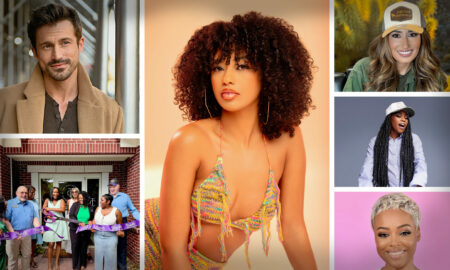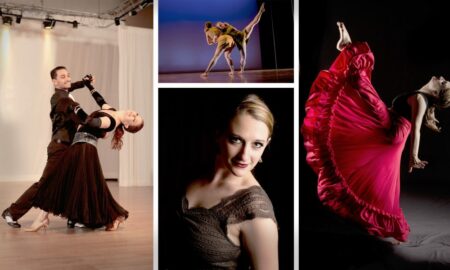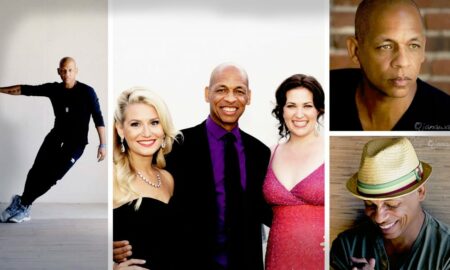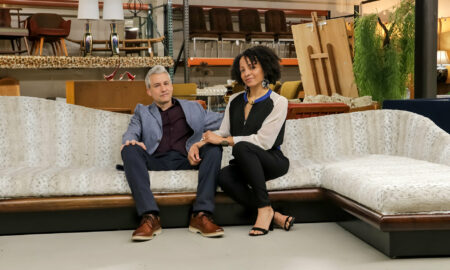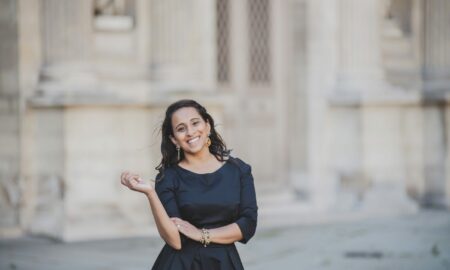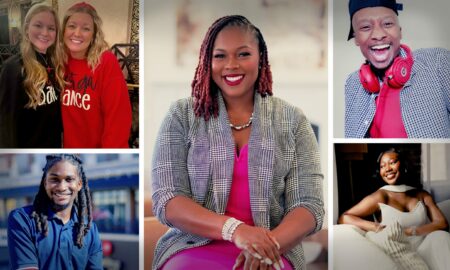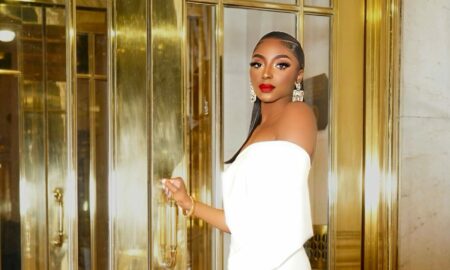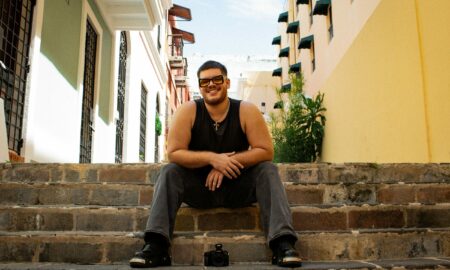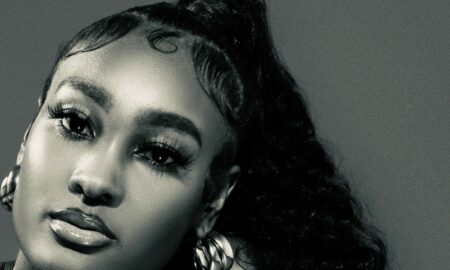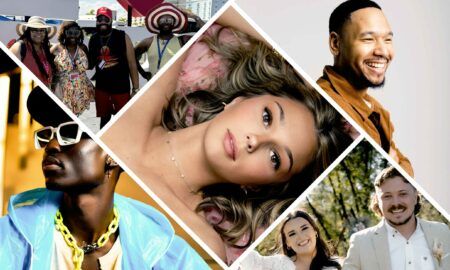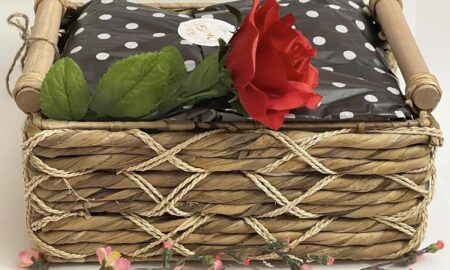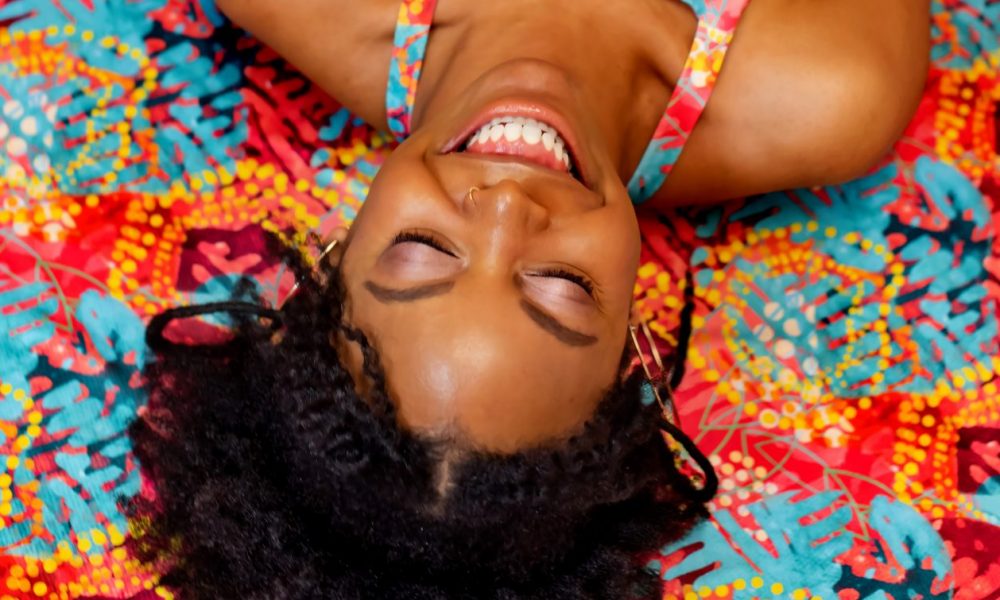

Today we’d like to introduce you to Aliana Grace Bailey.
Aliana, can you briefly walk us through your story – how you started and how you got to where you are today.
I’ve always been very creative. In elementary school I sewed pillows, made bouquets of flowers out of paper, interactive greeting cards. My bedroom walls and ceiling were a giant collage in itself. I had a big shelf in my room organized with supplies—many being found objects I collected. I was always experimenting. My parents raised me to be my own person and gave me creative freedom. My mom used to always say, “Find your passion, make it your life’s work, and serve others.” That will never leave my mind. It definitely shaped me and my values. I believe it helped me process at an early age what I care about most. I’m an empath and always felt very connected and sensitive to people, their circumstances, and wanting to make a difference in their lives. My dad got me involved in so many sports growing up, which taught me how to win, lose, take risks, be confident, put in work, and always follow things through. I was a dedicated track athlete before becoming a dedicated artist and I’m thankful for that foundation—it made a big difference.
I decided to pursue art and design professionally in the 11th/12th grade at Wilson HS. I was exposed to Graphic Design for the first time, which speaks to how crucial it is to expose our youth to an array of skills and career paths. I had a knack for it, enjoyed the process, and fell in love. I started college at NC A&T State University. I was there for five years. The fifth-year ended up being the most pivotal—affirming that I was meant to be there for that extra time. I went into college to pursue graphic design and A&T changed my life forever. While there, I fell in love with painting and printmaking; I revisited my love for textiles; experienced art as a tool for healing first-hand; embraced my gifts; found my tribe; witnessed how to shift culture; became a leader, and took on the challenge of double majoring in Visual Art Media Design and Social Work. The art department, Frazier Hall was my second home—it was the place that nurtured me and showed me my power. I really grew into the person I am today in that building.
A professor, Dr. Willie Hooker, said to me once that I had a “quiet power” about me—and that stuck. During my college career, I really discovered my passions, developed a strong sense of self, and embraced what it means to be a leader without trying to be anything other than myself. If it wasn’t for my experience in the art department, I don’t think I’d be as passionate about teaching. My desire to teach is rooted in my desire to pour back into that program what it poured into me.
After college, I’m thankful to have found another community that became a home—The Sanctuaries in DC. It was the first place I found that merged all the parts of me that matter most; art, design, social justice, and spirituality. I completed their Art for Social Impact fellowship and following that, helped launched its socially-engaged Teaching Artist program. In this community, I no longer felt like I was forcing my passions together nor that I had to convince others that it made sense. I could be my complete full self-surrounded by likeminded individuals. I learned to embrace my authentic voice. It was a beautiful, enriching experience that showed me what is possible in the world if we really show up for people and all their identities. I got deep into socially-engaged art during this time and got a lot of experience in the field.
Has it been a smooth road?
Graduate school was definitely a rough patch. I now have an MFA in Community Arts. I wasn’t prepared for the overwhelming mental-emotional impact of grad school, and the strain it would have on other parts of my life as a result. I came out stronger for sure, but I’m extremely glad it’s over, to be honest. lol. And I think I’m still healing through some of the things that shifted in my life during that time.
Prior to graduate school, I just went through a lot of trial and error. As artists and freelancers, you definitely have to find your own way. The paths are very unique. I took four years in between undergrad and graduate school. I learned a lot. A struggle I experienced was just going through the motions of learning how to navigate ethics, art, and bureaucracy. As artists, opportunities present themselves and you have to be mindful of the way you and your art will be used. You have to be mindful of other people’s intentions and actions, and ensure that they align with yours. You have to do the research, ask the right questions, control the narrative, recognize when the art is simply used as a veil to cover up something larger, hold yourself and others accountable, and speak out to ensure communities are centered in conversations.
Please tell us about your work.
I’d say that I am known for my vibrant color scheme, patterns, and as an advocate for self-love and vulnerability. I am a multidisciplinary conceptual visual artist, designer, educator, and socially engaged art practitioner. My background in Social Work definitely sets me apart. I love working with people, organizations, and communities with initiatives that align with my values. I am most proud when new clients and opportunities come my way specifically because they value my personal aesthetic and what I’m about. That brings me joy. Every artist and their work have their own identity—so I love it when people come to me because they see what I uniquely bring.
I’ve been doing freelance graphic design for about nine years. As far as my fine art, it’s something I’ve always done for myself, professionally. It’s personal. I’m just now recently reaching a place where I’m being intentional about getting my art into the hands of the people who support it, which I feel good about. I do things in my own time when I’m ready to fully put myself in it. Giving myself that time allowed me to focus on me—to understand and connect deeper with myself and the art I create. I know myself, my brand, and my art better than ever.
Over the years, I’ve learned that my art can have a strong emotional impact on people. I’ve seen beautiful things happen. Learning that made me become more intentional. My work in the past two years has evolved into creating environments—healing spaces and installations where you are engulfed in the art I create and/or surrounded by tools to practice self-care. There’s a lot of different things I do, I could go on for a while. I am also a surface pattern designer now—a dream I’ve had my entire life. I’m excited to begin sharing my art with people in new ways.
Who else deserves credit – have you had mentors, supporters, cheerleaders, advocates, clients or teammates that have played a big role in your success or the success of the business? If so – who are they and what role did they plan / how did they help.
I have an amazing family. I grew up in a loving, supportive environment. My parents, aunts, uncles, grandparents—growing up in Shepherd Park NW DC. I’m also the youngest of three. My older sister, Bianca Arielle Bailey, and older brother Jason Quincy Bailey are an inspiration. They are both loving, talented, creative beings who have always had their own identity. We were all raised to be our own people and go after our passions—they have always been good people I admire and I look up to.
Plenty of educators and mentors within the fields of art, design, and social work. Joele Michaud, my Shepherd Elementary School art teacher who taught me the importance of writing as an artist at a young age; Grover Massenburg who introduced me to Graphic Design and affirmed that it was a good path for me to pursue; Roymieco Carter, director of the Visual Arts Program at NC A&T SU who shifted the culture during my time there and showed me what it looks like to advocate and educate, passionately. Dr. Mary Lewis, my advisor in the Social Work program who supported me as I pursued both fields; Erik Martinez Resly and Ahmane’ Glover of The Sanctuaries who trusted me with amazing projects and created space for me to own my voice, There’s definitely more. Darlene McClinton, Anne Kerns, Dominic Moulden, Nicoletta Daríta de la Brown, Leslie King Hammond, Christina Marsh, Veronica Land-Davis, Kenneth Krafchek, Sara Kaltwasser, Paula Philips. The list goes on.
Really everyone who believes in me. I’m really thankful for my support system, which is made up of people close to me and people from afar. I’m thankful for people who share how they feel about what I do and the impact I’ve had. That has always served as motivation. It’s what I return to when things get rough and I need reminders. It reminds me that I’m living out my life’s purpose—which since I was a child has always been to just simply make a positive impact on the lives of others. It reminds me that there’s a greater purpose in everything we do and this is worth it. I’m also thankful for my amazing artist friends. Having people around at different points in my life who understand what being an artist means has been vital to my well-being.
Contact Info:
- Website: https://www.alianagracebailey.com/
- Email: agracebailey@gmail.com
- Instagram: https://www.instagram.com/alianagrace/
- Facebook: https://www.facebook.com/alianagracebailey/
- Other: https://www.ambivalentintimacy.com/
Love Aliana’s work and story? Join her exclusive community and become a Patron. Patreon allows people who love what she does to contribute to its long-term sustainability and get special access to her journey! Join today and tell a friend.







 Image Credit:
Image Credit:
Danielle Finney
Suggest a story: VoyageATL is built on recommendations from the community; it’s how we uncover hidden gems, so if you or someone you know deserves recognition please let us know here.

